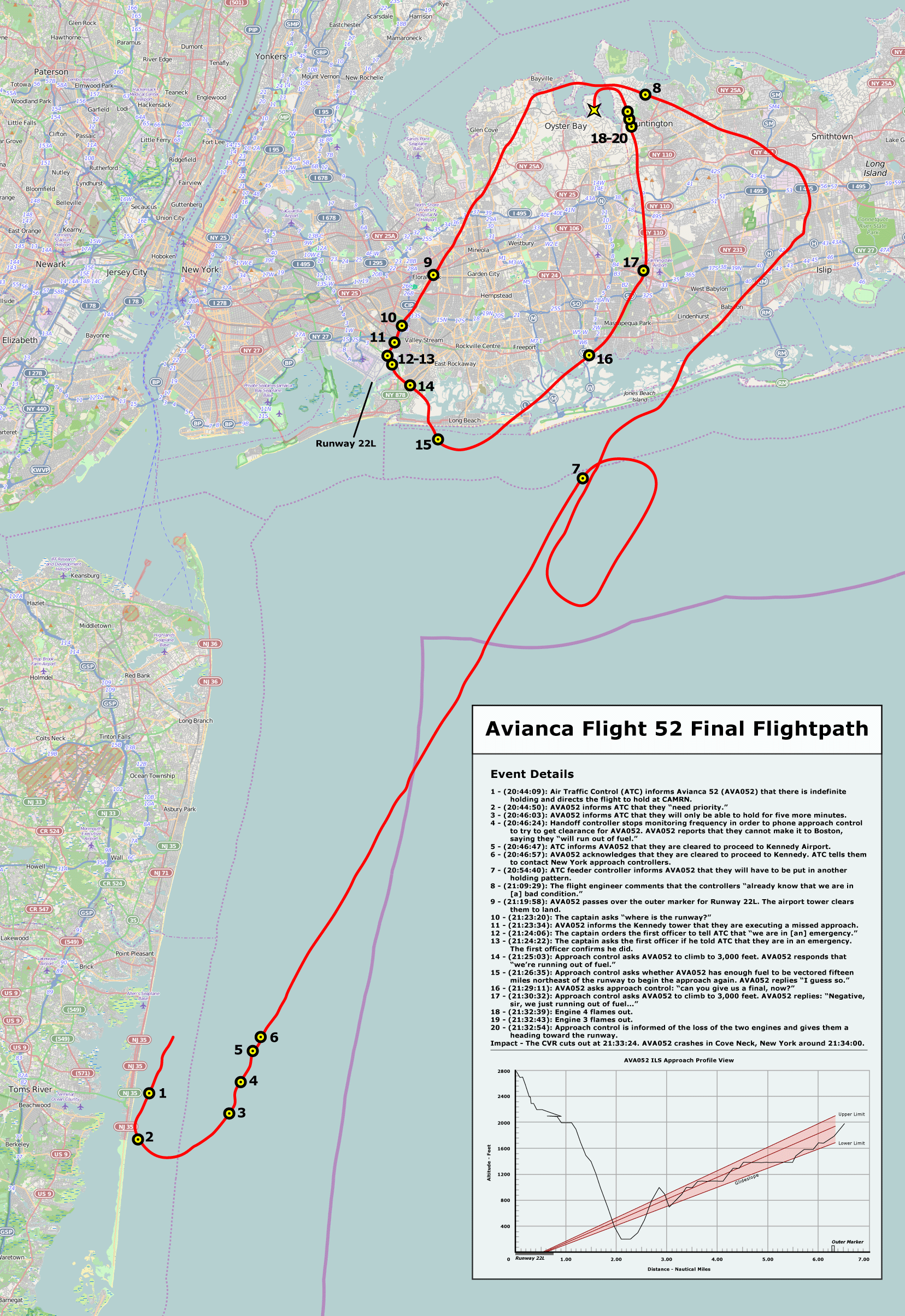|
Aviation English
Aviation English is the '' de facto'' international language of civil aviation. With the expansion of air travel in the 20th century, there were safety concerns about the ability of pilots and air traffic controllers to communicate. In 1951, the International Civil Aviation Organization (ICAO) recommended in "ICAO Annex 10 ICAO (Vol I, 5.2.1.1.2) to the International Chicago Convention" that English be universally used for "international aeronautical radiotelephony communications." Despite being a recommendation only, ICAO aviation English was widely accepted. Miscommunication has been an important factor in many aviation accidents. Examples include: the 1977 Tenerife airport accident (583 dead); the 1990 crash of Avianca Flight 52, in which crew failed to impart their critical fuel emergency to air traffic controllers (73 dead); and the 1996 Charkhi Dadri mid-air collision (349 dead). ICAO has acknowledged that "communications, or the lack thereof, has been shown by many acci ... [...More Info...] [...Related Items...] OR: [Wikipedia] [Google] [Baidu] |
Native Speakers
A first language (L1), native language, native tongue, or mother tongue is the first language a person has been exposed to from birth or within the critical period. In some countries, the term ''native language'' or ''mother tongue'' refers to the language of one's ethnic group rather than the individual's actual first language. Generally, to state a language as a mother tongue, one must have full native fluency in that language. The first language of a child is part of that child's personal, social and cultural identity. Another impact of the first language is that it brings about the reflection and learning of successful social patterns of acting and speaking. Research suggests that while a non-native speaker may develop fluency in a targeted language after about two years of immersion, it can take between five and seven years for that child to be on the same working level as their native speaking counterparts. On 17 November 1999, UNESCO designated 21 February as Interna ... [...More Info...] [...Related Items...] OR: [Wikipedia] [Google] [Baidu] |
Test Of English For Aviation
The Test of English for Aviation (T.E.A.) is a language proficiency test designed and developed by Mayflower College in the United Kingdom. Following several accidents and incidents where language was a contributing factor (see e.g. ), the International Civil Aviation Organization now requires all civil pilots and Air traffic controllers (working in an international environment) to have a minimum level of English. The T.E.A. assesses candidates' written and spoken English abilities through the skills of vocabulary, structure, pronunciation, fluency, comprehension, and interactions. It is a test of ability in plain English in aviation settings, not of aeronautical phraseology. The test is administered by a single examiner in an interview setting with the candidate, and takes 25–30 minutes. The test has three parts. In the first part, the interviewer in the candidate have a general conversation regarding the candidate's interest and experience in aviation. In the second ... [...More Info...] [...Related Items...] OR: [Wikipedia] [Google] [Baidu] |
Zurich University Of Applied Sciences/ZHAW
The Zurich University of Applied Sciences (ZHAW; ) located in the city of Winterthur, with facilities in Zurich and Wädenswil, is one of the largest Fachhochschule, University of Applied Sciences in Switzerland. The university has eight departments, covering architecture and civil engineering, Health education, health, linguistics, life sciences and facility management, applied psychology, social work, engineering and management and Legal education, law. History The Zurich University of Applied Sciences was founded in September 2007, when the previously independent institutions ''Zurich University of Applied Sciences Winterthur'', ''University of Applied Sciences Wädenswil'', the ''School of Social Work'' and the ''School of Applied Psychology'' in Zurich merged. The former Zurich University of Applied Sciences Winterthur was itself made up out of schools with long histories: the ''Technikum Winterthur'' was founded in 1874 as Switzerland, Switzerland's largest engineering sch ... [...More Info...] [...Related Items...] OR: [Wikipedia] [Google] [Baidu] |
Eurocontrol
The European Organisation for the Safety of Air Navigation, commonly known as Eurocontrol (stylised ''EUROCONTROL''), is an international organisation working to achieve safe and seamless air traffic management across Europe. Founded in 1963, Eurocontrol currently has 42 member states with headquarters in Brussels, Belgium. It has several local sites as well, including an Innovation Hub in Brétigny-sur-Orge, France, the Aviation Learning Centre (ALC) in Luxembourg, and the Maastricht Upper Area Control Centre (MUAC) in Maastricht, Netherlands, the Netherlands. The organisation employs approximately two thousand people, and operates with an annual budget in excess of half a billion euros. Although Eurocontrol is not an agency of the European Union, the EU has delegated parts of its Single European Sky regulations to Eurocontrol, making it the central organisation for coordination and planning of air traffic control for all of Europe. The EU itself is a signatory of Eurocontrol and ... [...More Info...] [...Related Items...] OR: [Wikipedia] [Google] [Baidu] |
ELPAC Test
English Language Proficiency for Aeronautical Communication Test (ELPAC) is a EUROCONTROL test for aeronautical communication designed to assess ICAO English Language Proficiency for pilots and air traffic controllers, and reflects the range of tasks undertaken in air traffic control and pilot communications. The test focuses on language proficiency, not operational procedures. ICAO Requirements for Language Proficiency The implementation of the ICAO language proficiency requirements in 2011 marked an improvement to international standardization in aviation, requiring that all air traffic controllers and pilots operating in internationally designated airspace and on international air routes demonstrate their proficiency in the language(s) they use for aeronautical communication.ICAO Doc 9835 Manual on the Implementatio ... [...More Info...] [...Related Items...] OR: [Wikipedia] [Google] [Baidu] |
Standardized Test
A standardized test is a Test (assessment), test that is administered and scored in a consistent or standard manner. Standardized tests are designed in such a way that the questions and interpretations are consistent and are administered and scored in a predetermined, standard manner. A standardized test is administered and scored uniformly for all test takers. Any test in which the same test is given in the same manner to all test takers, and graded in the same manner for everyone, is a standardized test. Standardized tests do not need to be high-stakes tests, time-limited tests, Multiple-choice test, multiple-choice tests, academic tests, or tests given to large numbers of test takers. Standardized tests can take various forms, including written, Oral test, oral, or Performance test (assessment), practical test. The standardized test may evaluate many subjects, including driving test, driving, Creativity test, creativity, Fitness test, athleticism, Personality test, personality, ... [...More Info...] [...Related Items...] OR: [Wikipedia] [Google] [Baidu] |
English For Specific Purposes
English for specific purposes (ESP) is a subset of English as a second or foreign language. It usually refers to teaching the English language to university students or people already in employment, with reference to the particular vocabulary and skills they need. As with any language for specific purposes, language taught for specific purposes, a given course of ESP will focus on one occupation or profession, such as Technical English, Scientific English, English for medical professionals, English for waiters, English for tourism, etc. Despite the seemingly limited focus, a course of ESP can have a wide-ranging impact, as is the case with Environmental English. English for academic purposes, taught to students before or during their degrees, is one sort of ESP, as is Business English. Aviation English is taught to pilots, air traffic controllers and civil aviation cadets to enable clear radio communications. Definition Absolute characteristics # ESP is defined to meet psychologi ... [...More Info...] [...Related Items...] OR: [Wikipedia] [Google] [Baidu] |
Professional Certification
Professional certification, trade certification, or professional designation, often called simply ''certification'' or ''qualification'', is a designation earned by a person to assure qualification to perform a job or task. Not all certifications that use post-nominal letters are an acknowledgement of educational achievement, or an agency appointed to safeguard the public interest. Overview A certification is a third-party attestation of an individual's level of knowledge or proficiency in a certain industry or profession. They are granted by authorities in the field, such as professional society, professional societies and universities, or by private certificate-granting agencies. Most certifications are time-limited; some expire after a period of time (e.g., the lifetime of a product that requires certification for use), while others can be renewed indefinitely as long as certain requirements are met. Renewal usually requires ongoing education to remain up-to-date on advanceme ... [...More Info...] [...Related Items...] OR: [Wikipedia] [Google] [Baidu] |
Civil Aviation
Civil aviation is one of two major categories of flying, representing all non-military and non-state aviation, which can be both private and commercial. Most countries in the world are members of the International Civil Aviation Organization and work together to establish common Standards and Recommended Practices for civil aviation through that agency. Civil aviation includes three major categories: * Airline, Commercial air transport, including scheduled and non-scheduled passenger and cargo flights * Aerial work, in which an aircraft is used for specialized services such as agriculture, photography, surveying, search and rescue, etc. * General aviation (GA), including all other civil flights, private or commercial Although scheduled air transport is the larger operation in terms of passenger numbers, GA is larger in the number of flights (and flight hours, in the U.S.) In the U.S., GA carries 166 million passengers each year, more than any individual airline, though less tha ... [...More Info...] [...Related Items...] OR: [Wikipedia] [Google] [Baidu] |
Charkhi Dadri Mid-air Collision
On 12 November 1996, Saudia Flight 763, a Boeing 747 en route from Delhi, India, to Dhahran, Saudi Arabia, and Kazakhstan Airlines Flight 1907, an Ilyushin Il-76 en route from Chimkent, Kazakhstan, to Delhi, collided over the city of Charkhi Dadri, around west of Delhi. The crash killed all 349 people on board both planes, making it the world's deadliest mid-air collision and the deadliest aviation accident ever in India. The final report from the investigation revealed that the Kazakh crew's failure to maintain the correct altitude led to the collision. Contributing factors included the poor English language skills in the Kazakh cockpit, resulting in inadequate interpretation of directions provided by air traffic control, and three specific incidents of failures in crew resource management (CRM) by the Kazakh crew. The report also suggested technical enhancements (including ACAS and SSR) that would provide assistance in preventing a future crew's mistakes from being allowed t ... [...More Info...] [...Related Items...] OR: [Wikipedia] [Google] [Baidu] |
Avianca Flight 52
Avianca Flight 052 was a regularly scheduled flight from Bogotá, Colombia, to New York City, United States, via Medellín, Colombia, that crashed on January 25, 1990, at 21:34 ( UTC−05:00). The Boeing 707 flying this route ran out of fuel after a failed attempt to land at John F. Kennedy International Airport (JFK), causing the aircraft to crash onto a hillside in the small village of Cove Neck, New York, on the north shore of Long Island. Eight of the nine crew members and 65 of the 149 passengers on board were killed. The National Transportation Safety Board (NTSB) determined that the crash occurred due to the flight crew failing to properly declare a fuel emergency, failure to use an airline operational control dispatch system, inadequate traffic flow management by the Federal Aviation Administration (FAA), and the lack of standardized understandable terminology for pilots and controllers for minimum and emergency fuel states. The flight left Medellín with more than en ... [...More Info...] [...Related Items...] OR: [Wikipedia] [Google] [Baidu] |




